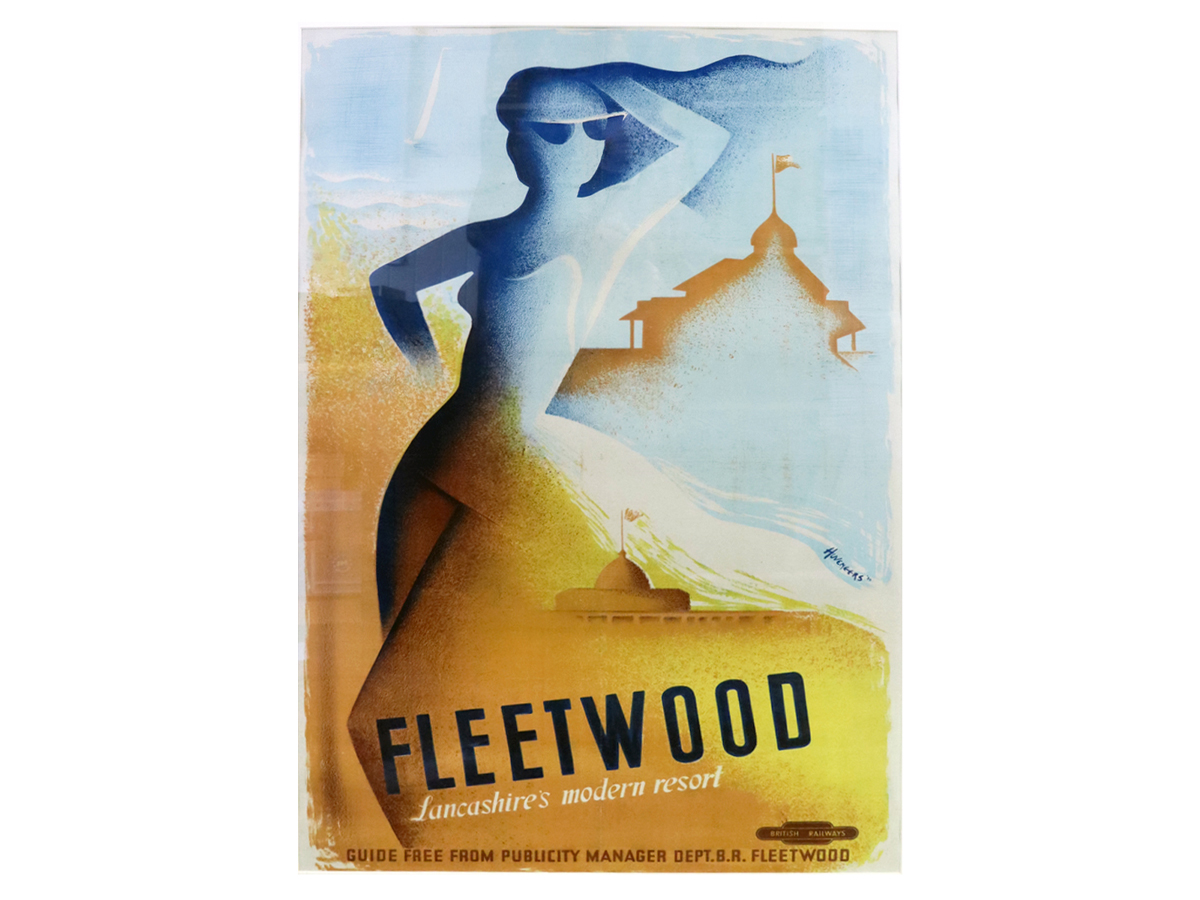British Railways Travel Poster
Description
Dutch graphic artist Pieter Huveneers produced striking hand-crafted posters and advertisements for brands including BOAC, British Railways, General Electric Company, ICI, Pepsi Cola, and the Post Office. His vision of design was Adaptability Visibility Durability. He believed the design should suit all media, be capable of instant recognition irrespective of size or colour and be free from elements of fashion which could 'date' it.
This Huveneers poster of 1951 shows a subtle marketing campaign to attract visitors away from the bright lights of Blackpool and Southport to enjoy an altogether more modern experience in Fleetwood.
As a new town on the Wyre estuary north of Blackpool, Fleetwood relied heavily on the railway. The town was conceived by landowner Peter Hesketh-Fleetwood, MP. When, in 1830 as High Sheriff of Lancashire, he attended the opening of the Liverpool to Manchester passenger railway he envisaged a busy seaport and popular coastal resort on his land served by the railway. Working people could set off early from Lancashire mill towns, enjoy a day at the seaside and still get home in time for supper.
At the time the technical problems of a rail line over the north Pennines to the Tyne Gap and beyond seemed insurmountable. The answer was a transport hub, a terminus for rail and a seaport for steamers on up the coast to Scotland. The North Euston Hotel in Fleetwood, completed in 1841, was built to serve overnight guests on this journey. The future of Fleetwood seemed secure when in 1847 Queen Victoria and Prince Albert stayed at the hotel while making the trip down from Scotland. However, when the western railway main line between London and Scotland over Shap Fell was completed in 1855 the ongoing passenger trade evaporated, and Fleetwood was forced to look forward to its port and fisheries for its future.
Details
- Accession number
- LANMS.2010.85.1
- Category
- Social History
- Materials
- paper
On display
50 Objects Exhibition at Helmshore Mills Textile Museum 6 June - 31 October 2025. Search www.lancashire.gov.uk for Helmshore Mill opening times.

